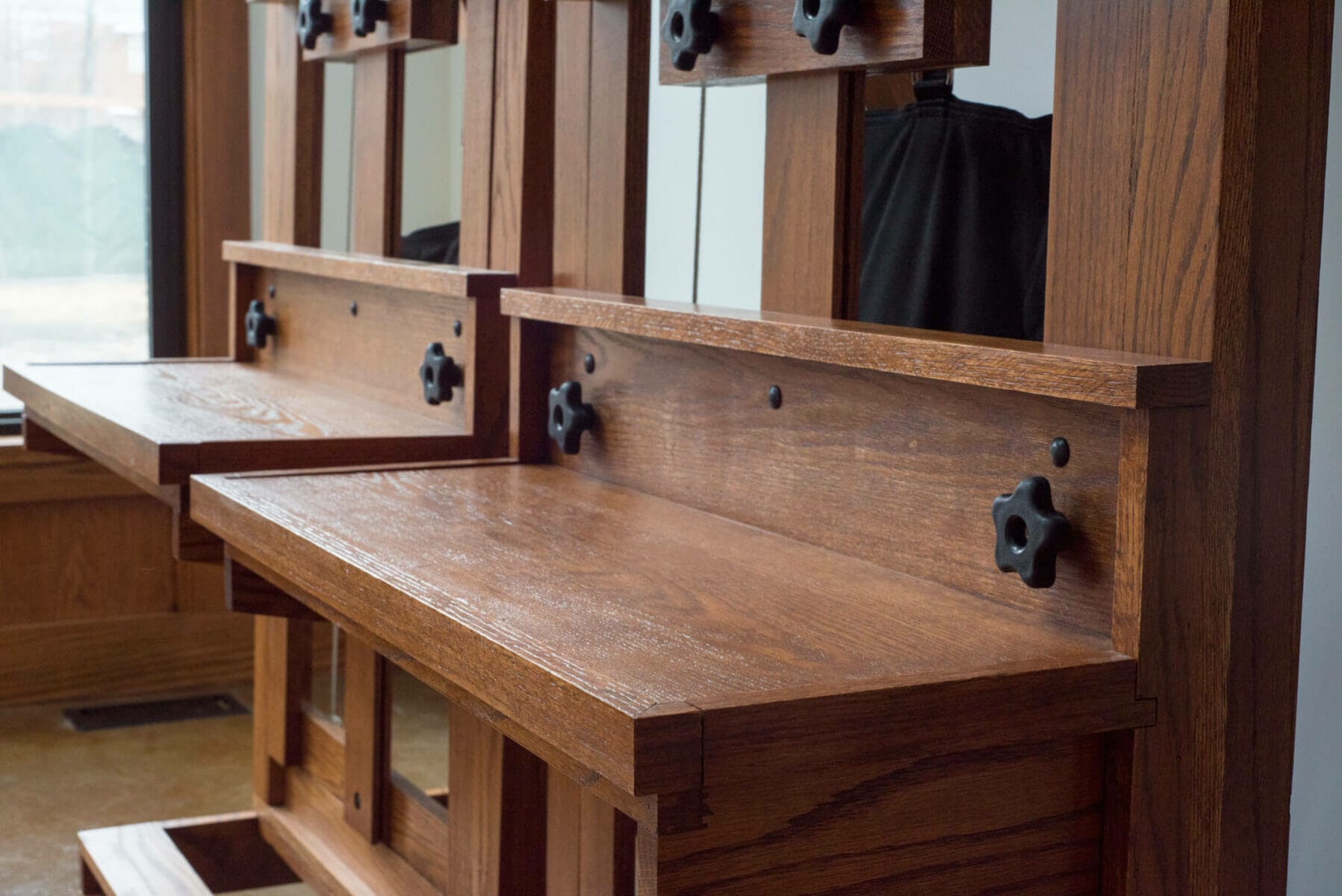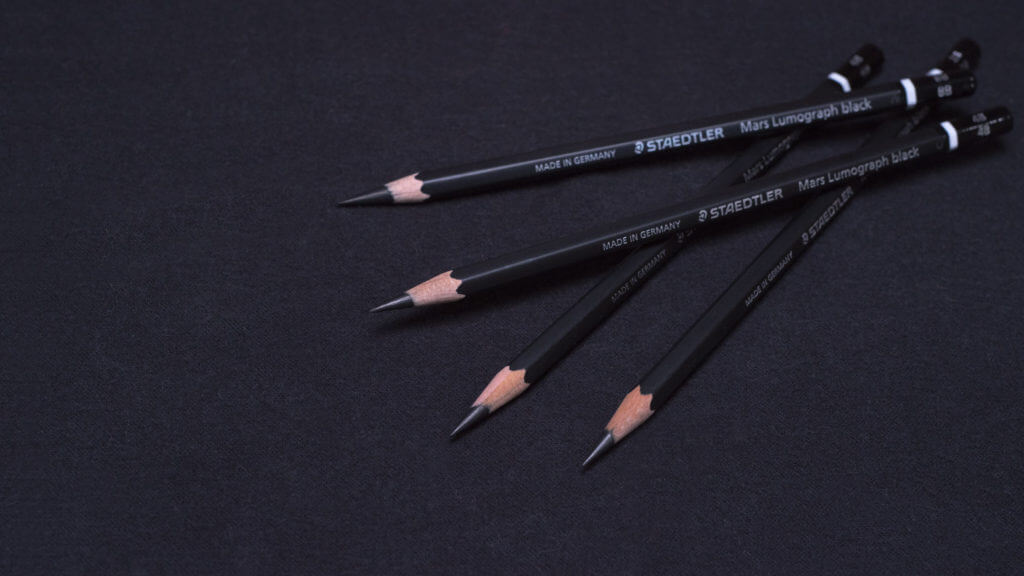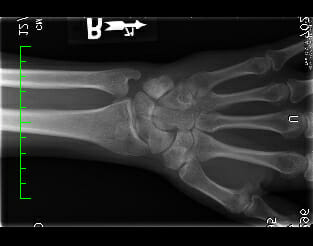Painting on Copper

Those who’ve taken David’s still life painting course at Vitruvian will be familiar with how we normally paint on canvas or wooden panel. It’s a good method that we’ve used for years, and it yields beautiful results. But, oil painting is a big topic. There are many different approaches to making a painting, from technique to materials choices, and artists love to experiment! Copper is one of my favorite surfaces to paint on, but it’s quite different than working on wood or canvas, and I had to adjust the way I paint as a result. In this post, I thought I’d a share a little portrait on copper I’m currently working on, and discuss some of the challenges it presents. It's not nearly finished yet, but there's enough here to talk about.
Why Copper?
Artists have painted on copper for centuries because of its unique characteristics. Being metal, it’s inorganic and impervious to moisture, so it’s not subject to the same stresses that can cause other supports to deteriorate over time. It’s also a beautiful color that can be glimpsed through some of the thinner passages of a painting, and lends artwork a sparkling, gem-like quality.
But it’s also a very different beast than other supports, so if you want to try painting on copper, it’s important to understand what you’re getting into.
It’s Bare Metal
The first thing to know about painting on copper is that there’s no need to prime it. In fact, coating the surface with several layers of gesso or oil primer would kind of defeat the purpose of painting on copper. That beautiful pinkish-orange color is part of what I love about it, and I want that to show through in my paintings!

We can get away with this on copper because it oxidizes rather slowly. Other metals like aluminum or steel will corrode as they react with air at a fairly rapid pace – even while you’re working – and cause the paint film to peel off the surface eventually. Since copper won’t corrode as quickly, it will remain relatively inert while you paint without needing to be “stabilized” by a layer of primer. Once you’re done painting, the surface can be varnished to protect it from the air.
The only real requirement by way of preparing the panel for painting is to clean it thoroughly with isopropyl or denatured alcohol. This will remove any grease or other contaminants that may interfere with adhesion of the paint film. After that, you’re good to go.
While it’s certainly possible to prime the surface before use, and some manufacturers of copper panels even recommend it, a thin wash of lead or titanium white will do the trick. Multiple coats of primer or gesso, sanded in between – as you might do when preparing a wooden panel – are never required when painting on copper.
It’s Smooth
If you’ve never painted on metal before, pay attention. A copper panel is extremely smooth and non-absorbent. As a result, paint slips and slides around the surface like a greased pig on a linoleum floor! Personally, I like that characteristic, but artists who’ve painted on sanded wooden panels with fine gesso grounds don’t know the meaning of “smooth” until they’ve tried painting on bare metal. It takes some getting used to, so if you try it, be patient! It’s a different kind of painting experience.
All this is really only an issue at the beginning stages, when you’re painting on the exposed metal while developing an underpainting. The way I handle it is to not worry too much about being “perfect” early on. Instead, I just focus on putting paint down while maintaining the values and the drawing the best I can. The goal of this underpainting stage when working on copper is to build-up some opacity in the light masses, and create a bit of texture on the surface that subsequent layers can grab onto more effectively.

It’s Reflective
Once your underpainting is complete you’ll notice that subsequent layers don’t slide around so much when you’re painting, which is good. But the opacity of the paint you apply is another matter – that inner glow from the copper can still make its way through. While this isn’t a bad thing per se, you will need to pay close attention to the colors you choose, at least in the areas where you want to develop an opaque paint film.
As much as I love working with colors like rose madder (the historical version of alizarin crimson), chrome yellow, and ivory black, all three of these are very transparent, whatever support you use. But on copper, where the reflectivity of the metal acts like a backlight behind your painting, that transparency can feel magnified. That can be frustrating, especially if you’ve spent a lot of time carefully mixing the perfect color, only to realize you’ll have to mix it again later to achieve opacity by building up the painting in layers.

The solution here is to use more opaque pigments in the first place – ones that offer better coverage in these early layers of the painting process. I’ve added an iron oxide called hematite (thanks to Tony Adcock for that suggestion) and Old Holland flesh ochre as a companion to the rose madder. I’ve also added Italian Naples yellow and yellow ochre to beef out my chrome yellow. I didn’t feel the need to change up my ivory black, but I did add some raw umber and burnt umber to my palette as well.
What all this means is, sometimes it pays to be flexible with your paint choices. We all have our “favorite colors” we like to use, but what works in one context, like painting on a canvas, may not in another, like painting on bright copper, and you’ll need to adapt. Ultimately, there are no “correct” colors to use for anything, only better or worse choices for establishing the color effects you’re trying to create.
Light to Dark
Artists have different preferences on whether they work from dark to light, or from light to dark as they work to model form. But when working on copper, I prefer to build-up my light masses first, and use them to gauge how dark I’ll need to go in the shadows. This, again, is largely due to the reflectivity of the copper. Light can bounce and glare off the surface of the metal in a way that can be disorienting, making areas of your painting seem lighter than they are. Covering the copper with opaque paint eliminates that problem, allowing for more reliable estimation of intervals into the shadow.
On the subject of judging values, one common problem in painting, that persists even when working on copper, is that some paint mixtures will “sink in” when fully dry. Experienced oil painters will be familiar with this effect – darker colors in a painting containing blacks and umbers will sometimes dry to a matte finish, thereby appearing lighter than they were when you mixed them. To visualize this effect, think of the difference between a wet river stone and a dry one – the same surface can appear radically lighter or darker, depending on its degree of gloss. I’m so used to this happening that I really don’t worry about it unless I’m trying to gauge other values within the painting. But if I need to, I’ll lightly oil-out those darker areas with a light passing of oleogel, applied with a dry brush. This will restore enough gloss to the painting’s surface that those sunken-in colors will be reinstated to their true, dark values.


For those of you not familiar with it, Oleogel is a wonderful painting medium that offers a nice, solvent-free alternative to the more stinky mediums that I’ve used in the past (I’m looking at you, Venetian medium). Oleogel is a mixture of linseed oil and fumed silica. As its name implies, it has a gel-like consistency out of the container, but becomes more fluid as you work with it – a strange characteristic of certain materials known as “thixotropy.” Oleogel is made by our friends George and Tatiana at Natural Pigments in Wilits, California. You can find more information on it here. It does increase the transparency of your paint, so use it sparingly (as you should any medium), but I like how it helps me blend and feather colors into smooth transitions as the painting progresses.
Developing the Painting Further
Once the underpainting is completed, and I’ve got some paint built-up on the surface, I can proceed without thinking so much about the support – the copper is still there, but I can paint now more like I would on any surface.
As you can see, details like the earrings are still kept minimal. I will add darker passages of paint along the outer helix of the ear for them as place holders, but I can still see the transfer of the drawing where I’ll eventually map out the dangling pearl earring. These are details I won’t to commit to right now, but instead focus on establishing big-picture relationships by laying-in larger, more opaque areas of paint. Now that I finally have the coverage that I need around the ear, I can return to using some of my preferred colors without worrying about opacity, and steer the painting toward its finished state.

Blend With Caution
Once plenty of paint has been laid down, and the colors are well-placed, it’s time to consider integrating different passages of paint together by softening edges and transitions. I usually prefer to do this with a dry natural hair brush like mongoose or badger.
Blending is a contentious thing in representational painting circles. In fact, some artists advocate resisting the impulse to blend at all. The tendency is to over-blend, resulting in doughy-looking form and muddy color. Personally, I embrace some amount of blending, but sparingly – I try to think of it as subtly softening boundaries between passages of paint, rather than mixing paint together broadly on the surface.
When working on a smooth surface like copper, as long as you have a decent amount of paint laid down, you can blend and push it around with very little effort. I love that, but it’s also very easy to lift paint up off the surface by accident, so I had to proceed with caution. Patience is key when shaping the paint film with dry brushes on such a slick surface.

Now, Back to Work!
Copper is a precious metal, but painting on it is also a precious process – one that I revel in when I have the opportunity. There’s still a long way to go in my painting, but you can see the steps I’ve taken along the way to get a good solid start. I’ll continue to chip away at this portrait… slowly but surely… piece by piece… and know that it’s worth my time and attention to get things right. That means I’ll have to combat my tendency to get distracted (I have the attention span of a gnat!) and my greediness to get it done fast.
On matters of technique, a former teacher of ours used to say that “if it works, it’s good”. But it can still get confusing sometimes, with the ocean of different materials, techniques, and competing opinions available to artists today. Finding your way can be daunting.
But whenever I feel that way, I try to remember a couple of simple things: keep an open mind, and don’t be afraid to experiment. It’s art, after all – we’re not curing cancer here, and nobody’s life depends on that next painting. There was a time when I would have run for the hills after encountering some of the challenges of painting on copper, retreating to more familiar techniques and materials. But with time and practice, I’ve come to really love this way of working. It challenged me to rethink the way I paint, to embrace new colors on my palette, and to be patient in the way that painting on copper requires. Try to remember this if you decide to try painting on copper yourself – in time, you’ll be making artwork every bit as precious as what it’s painted on.
Now, it's time for me to finish this portrait.







Hello, hope you are doing well.
I actually have a question about this process: Do you think it is possible to do this on accessories? I have a ring made of copper and its paint started peeling off from use (originally painted black). I was just wondering if I did the same as with a canvas, would it still work?
Thank you.
Hi Maria. Yes you should be able to use oil paint on the copper. You will want to clean it with denatured alcohol first. Give it a good scrubbing and then wipe heavily with the alcohol. After the oil is dry, a coating of clear varnish should be applied to protect the surface. This varnish is specifically designed for copper and it’s what I use…. https://www.naturalpigments.com/mediums-grounds/varnishes/conservar-acrylic-varnish.html
You can also check out paints that are specifically designed for painting on metal jewelry. These are epoxy paints and will stand up to wear and tear. https://www.riogrande.com/product/colores-epoxy-resin-bright-opaque-colors-set/638962GP/?code=638962
Good luck! 😉
Hi Melinda, Thanks for the informative article! I always wondered why Lucian Freud painted Bacon’s portrait on copper.
Hello !!! Thanks for sharing all these things about painting in copper canvas. When I finished my work, Can I use dammar in copper too ?? How can I protect the copper to avoid oxidation
Relatively cheap source of copper: a roll of roofing copper from some hardware big box store. It’s a thin gauge—maybe one should mount it on board—but it can be cut with a hand tool. If you want a nice thick panel of copper, try metalworking/jewelry suppliers.
Great ideas, Kathy! Definitely mounting it on a board would be ideal! Every now and then you can find some thick pieces of copper at hardware stores… and always clean off your panels with a 000 steel wool and denatured alcohol to be sure there are no residual industrial by-products on the surface. 🙂
That is looking amazing!
When I saw that ear, I had to smile to myself. I know that Mindy is a lover of ears:) SO beautiful my friend.
Ha! Thanks Leifi! Spot on! Am I that predictable? I thought of going for the eye first but it’s in deeper shadow and the ear had more obvious contrasts that I knew would photograph better. I’m looking forward to working into the picture each day so it’s always nice to have a project that you look forward to working on. 😉
I love paintings on copper and plan to do one. Your portrait is gorgeous! How exactly did you transfer the drawing? You referenced David’s still life class, which I took, where we put oil paint on the back of the drawing. But wouldn’t that make a mess on the copper? Thank you for sharing so much info on this process. (Are you familiar with Olga Krimon’s work?)
Thanks Sherese! I transferred the drawing the same way David did in our Still Life class. I painted raw umber directly on the back of the drawing, wiped it away so there was no excess paint on the paper surface, and then attached it to the copper and outlined the drawing with a ball point pen. Because I wiped away the paint, there was no risk of anything other than what the pen point placed on the surface of the copper. I had to wait a few days for it to dry and then I was ready to get started. I’ll take a look at Olga’s work… thanks for the suggestion! 🙂
What an amazing process Mindy. Your painting is beautiful. Love that ear!
Thanks Jessica! It’s slow but steady…. Something I’m not the best at but it keeps me in line from going too fast. 🙂
Amazing!
Thanks Shyamsagar! 🙂
Mindy, the result is amazing! It appears to be a link between painting and sculpture, the manner in which the paint and mass of hair are woven give the pression that it is a piece of sculpture, an effect I cherish being a staunch lover of both forms of art. And the warm glow of the skin tone, breathless. Bravo!
Thanks Gihan! I definitely have to treat it that way just because the surface requires such a build up of paint. Now if only painting were as easy as sculpture! Painting is hard work for me! 🙂
Beautiful work Melinda!
Marianna’s friend!
Thanks so much Diana!! 🙂